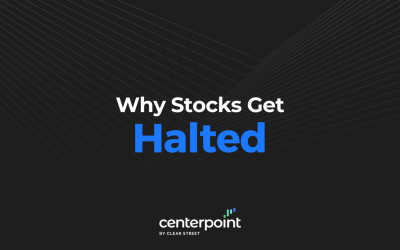It’s one of the worst things that can happen to a stock you’re holding long, the dreaded delisting. While the actual action of delisting is a scheduled event, the mere news or notion of a stock facing delisting can plunge the price as investors and traders fear the impending liquidity crunch and panic sell the shares.
What Does it Mean to “Delist” a Stock?
When a company faces a delisting, it means it’s being taken off of the major exchanges like the NYSE, NASDAQ, and AMEX onto the over-the-counter (OTC) or Pink Sheets, unless it’s being taken private.
In a nutshell, a delisting means the stock is being “evicted” from the major trading exchange and relegated to the less liquid OTC and Pink Sheets. Companies that are delisted have failed to meet the minimum mandatory listing requirements set forth by the exchange.

What Happens When a Stock is Delisted?
A publicly listed company is notified of the potential for delisting from the exchanges when they fail to meet certain minimum price and regulatory requirements for an extended period of time.
The company must respond to the delisting notification with a plan to meet the listing requirements. Failure to comply with the listing requirement or respond to the notice can result in a delisting.

If a stock becomes delisted, the liquidity drops immensely. In fact, they are considered illiquid. In many cases, they are untradeable on most brokerage platforms that don’t support OTCBB or Pink Sheets trading. Keep in mind that not all brokers allow trading on the OTCBB or Pink Sheet, especially the zero-commission mobile apps.
By disabling access to trading these stocks, they naturally become illiquid. The bid and ask spreads can be very wide with extremely thin volume. Some stocks can only be traded by appointment. Additionally, the filing requirements on OTCBB and Pink Sheets are more relaxed, leaving investors in the dark. It’s basically a graveyard for companies that went bankrupt or faced financial ruin. Very rarely do stocks relist after being delisted as they tend to wallow in bankruptcy or obscurity.

Why Are Stocks Delisted?
There are two types of delisting’s, voluntary and involuntary.
A voluntary delisting is usually not as bad since it comes as a result of a merger or being taken private (often at a premium).
However, an involuntary delisting is what some traders and investors fear as this is a compliance issue that can change the whole DNA of the liquidity and trading behavior. Involuntary delisting is a result of regulatory and compliance issues.
Delisting results a significant drop in liquidity as many platforms and brokers don’t allow trading in these exchanges. Involuntary delistings are rarely a good thing for investors and traders, unless you are short the shares or it’s part of a merger or being taken private.
Listing Compliance
The NASDAQ requires a share price of at least $1.00, at least 400 shareholders and shareholder equity valued at $10 million or total assets and revenues of $50 million or $50 million market value.
Bankruptcy
One of the worst cases happens when a company declares bankruptcy. The inability to meet listing requirements as a going concern causes shares to involuntarily delist as the stock is plagued with uncertainty.
These stocks tend to face heavy liquidation driving prices down. Keep in mind that even if the company is able to recovery from bankruptcy, it may do so by issuing new shares while eliminating the old shares. This is bad news for original investors that are hoping for a turnaround as it can happen without them as the original shares become worthless.
Stocks that are delisted due to bankruptcy onto the OTCBB or Pink Sheets usually have a five letter ticker that ends with a “Q”.
How Long Does a Stock Delisting Take?
If a company fails to meet the minimum listing requirements, they can be delisted from the exchange it trades on. Companies have 10 days on the New York Stock Exchange (NYSE) to respond to a notification letter from the exchange. Failure to respond can result in delisting procedures which is on a case by case basis but can range from one to seven months.
How Does Delisting Affect a Stock?
Stocks that are on the verge of delisting tend to sell-off harder due to the potential of illiquidity.
Investors and traders don’t want to be ‘holding the bag’, so they will sell at whatever prices they can attain to recoup as much of their investment as possible.
Listing requirements are mandated by each major exchange. Typically, a minimum $1 trading price for 30 consecutive days is a minimum requirement as well as financial metrics and sales minimums. Companies that fall under the minimum listing requirements will receive a notice of noncompliance from the exchange. The company gets a warning and needs to take action to get shares back above the $1 threshold.

Many times, companies will issue a reverse split to meet the minimum $1 listing requirement. For example, if XYZ stock is trading at $0.50, then they may issue a 1-for-10 reverse stock split that will result in a $5.00 share price on the split date.

Another reason for the stock price to collapse and liquidity to dry up is that institutional investors tend to liquidate shares when a company is about to be delisted.
How Do You Know if a Stock Will be Delisted?
The major exchanges will provide notifications to the companies that certain compliance issues must be met in order to avoid delisting. These notices are public information that can be found on the exchange websites and even press releases from the Company.
The Company may also release a statement to accompany the notice stating they are working with the exchange to meet requirements to pacify investors. As for the exact moment of delisting, that is usually not as transparent. In some cases, the exchange will provide a cutoff date for delisting. The exchanges try to give as much rope as possible for the underlying companies to avoid delisting since the exchanges themselves will also lose out on trading volume.







